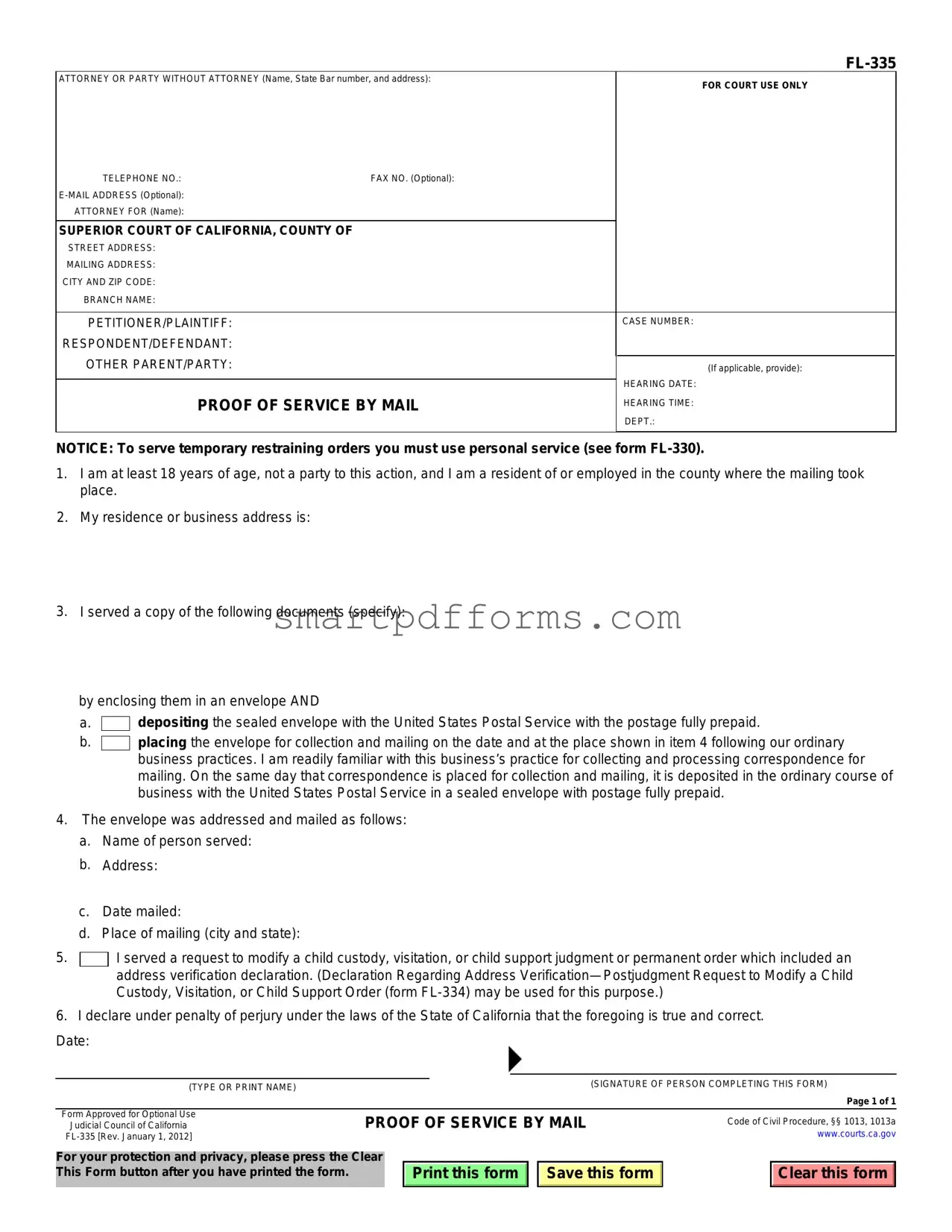Blank Fl335 Proof Of Service PDF Template
The FL-335 Proof of Service by Mail form is a legal document used within the California court system to formally declare that documents have been sent via mail to another party involved in a court case. It ensures a record exists that all necessary parties have received pertinent legal documents, with specific guidelines including the sender being at least 18 years of age and not a party to the action. Completing this form with accuracy and submitting it to the court is a crucial step in the process of legal proceedings, particularly for actions involving requests to modify child custody, visitation, or support judgments. For a guided process on filling out the FL-335 form, click the button below.
Make This Document Now




 I served a request to modify a child custody, visitation, or child support judgment or permanent order which included an address verification declaration.
I served a request to modify a child custody, visitation, or child support judgment or permanent order which included an address verification declaration.